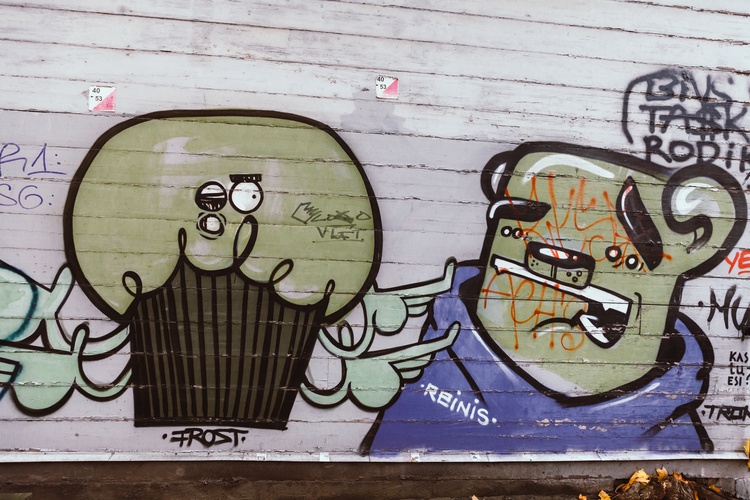
The new research journal of the Latvian Academy of Culture „Culture Crossroads/ Vol. 13” dedicated to street art and graffiti
On May 24, the 13th edition of the research journal „Culture Crossroads” was presented during the student research conference of the Latvian Academy of Culture „The Art-of-Knowing”. The latest edition dedicated to street art and graffiti is titled “Graffiti and Street Art - Challenges for Artists, Society and Conservators”. This volume of articles is an output of the research project “Graffiti in Latvia: challenges for artists, society, and conservators”, developed and implemented in close cooperation among the lecturers and students of the Latvian Academy of Culture and funded by the LAC Research Centre. The journal is available digitally: http://www.culturecrossroads.lv/en/latest
Graffiti and street art is a contemporary phenomenon, in public urban space in particular, which has been discussed in this volume of articles in order to encourage a broader discussion on the functions of graffiti and street art as social art, its legality and conservation issues. This volume invites for a dialogue maintained mostly by the alumni of the bachelor and master programmes of the Latvian Academy of Culture, whose research interests are connected to studying graffiti and street art in the context of cultural theory, cultural policy, culture management, as well as intercultural communication and cultural heritage studies. Researchers from disciplines, such as ethnology, folklore studies and legal sciences, have also joined the discussion.
The greatest part of this volume consists of articles on specific examples of graffiti and street art in Latvia, Bulgaria, Germany and France, revealing the social and cultural aspects behind particular features of content, stylistics, techniques, and provides comparative views on diverging practices for promoting and preserving graffiti and street art. The journal begins with an article by Auguste Petre, alumna of the Latvian Academy of Culture, who analyzes graffiti as social art and means of communication with society, seeing contemporary graffiti as a prolongation of a historical tradition. While Elīna Balode, alumna of the Latvian Academy of Culture, explores the personal aims and motivation of street artists and graffiti writers. Researcher Miglena Ivanova proposes insights into the role of graffiti in the construction of identity, exploring interconnection of signs from different periods in the urban space in Sofia, Bulgaria. A separate theme – environment and ecology – and its interpretation in the street art in Germany is dealt with by Alise Taškāne, alumna of the Latvian Academy of Culture. Further on, Valērija Želve, alumna of the Latvian Academy of Culture, invites to examine the possibilities of taking the experience of Paris, France, as a source of inspiration for promoting the creative processes of graffiti and street art in the urban environment in Riga.
This volume also draws attention to graffiti and street art in the context of policy making and legal regulations. Oskars Goba, alumnus of the Latvian Academy of Culture, analyses the usage of graffiti and street art as a resource for urban development planning, taking the example of Riga. Particular attention is paid to the normative regulation related to graffiti and street art, which is explored by researcher Vadim Mantrov, namely in the context of Latvian authors’ law.
Important innovation of this volume, in the context of Latvia, is the challenges of
conservation of graffiti as contemporary art form, which have been addressed by Sintija Saldābola, alumna of the Latvian Academy of Culture as she examines the problematic issues of conservation of graffiti, and ethical concerns regarding its restoration.
The introductory part of this volume has been supplemented with a selection of photos of graffiti and street art, made by Aija Melbārde and Auguste Petre. The journal also includes an addendum – an insight into the interactive map of Riga street art, created by ‘Street Art Hunters’, a group of enthusiasts based in Riga, and commented by Agnese Aljēna.
This journal encourages to find an answer whether graffiti and street art is a threat to cultural heritage, or, on the contrary, is a part of it.
